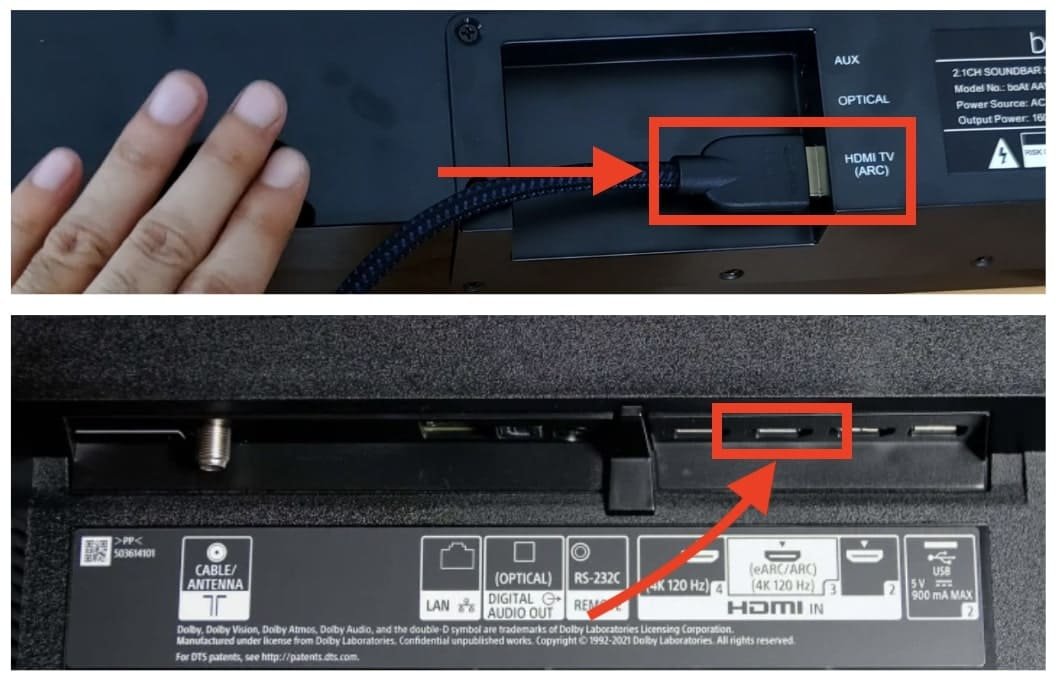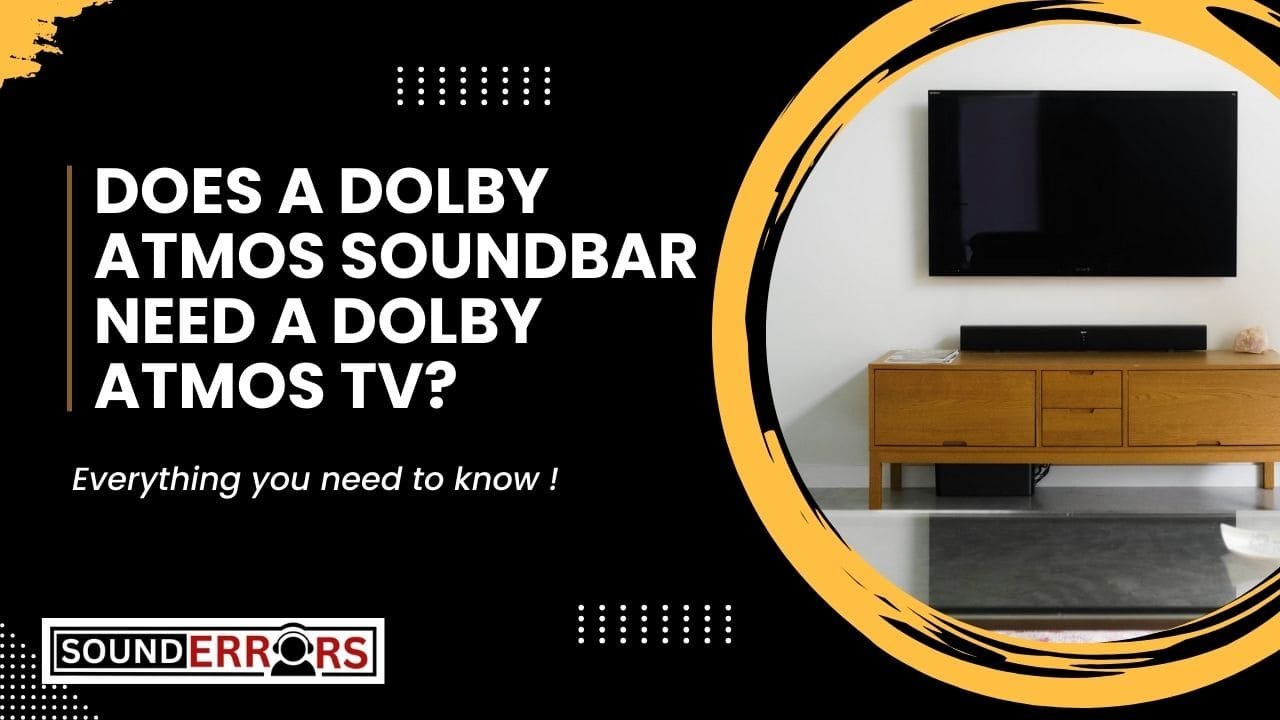This Post may contain affiliate links, when you purchase through links on our site, we may earn an affiliate commission at no extra cost to you. Here’s how it works.
In the realm of home entertainment, audio quality often holds as much importance as visual clarity. Dolby Atmos, a name synonymous with immersive audio, has revolutionized the way we experience sound in our homes.
Table of Contents
ToggleQuick Answer: Without Dolby Atmos TV, Dolby Atmos soundbars can process Dolby Atmos sound independently, which means TVs without Dolby Atmos capabilities can work with them. The soundbar receives the audio signal from the TV and decodes the Dolby Atmos content itself, creating an immersive sound experience.
Do You Need a Dolby Atmos TV To Get Dolby Atmos?
This is the crux of many consumers’ questions. A Dolby Atmos TV is one that can either decode or pass through Dolby Atmos audio to a sound system.
However, the unique aspect of Dolby Atmos soundbars is their ability to process Dolby Atmos sound independently.
This means that even TVs without Dolby Atmos capabilities can work with these soundbars.
The soundbar receives the audio signal from the TV and decodes the Dolby Atmos content itself, creating an immersive sound experience.
Dolby Atmos Soundbars: An Overview
A Dolby Atmos soundbar is a sleek, standalone speaker system designed to replicate the enveloping sound of Atmos.

These soundbars utilize upward-firing speakers to reflect sound off the ceiling, creating the illusion of overhead audio.
They’re engineered to deliver a multidimensional soundscape in a compact form factor.
Setting Up Your Dolby Atmos Home Theater
Setting up a Dolby Atmos home theater is straightforward.
Connect your Dolby Atmos soundbar to your TV via an HDMI ARC (Audio Return Channel) or eARC (enhanced Audio Return Channel) port.

This allows the TV to send audio directly to the soundbar.
For the best experience, ensure the soundbar is centrally positioned and the room’s acoustics are considered.
Understanding Dolby Atmos:
Dolby Atmos, introduced in cinemas and now a staple in home theatres, is an innovative audio technology that creates a 3D sound experience.
Unlike traditional surround sound, Dolby Atmos adds height to the audio landscape, allowing sounds to move around you in a three-dimensional space.
This advancement brings a new level of immersion to movies, music, and games.
Considerations When Buying Dolby Atmos Equipment:
When shopping for Dolby Atmos equipment, consider the following:
- Soundbar Compatibility: Ensure the soundbar supports Dolby Atmos decoding.
- TV Connectivity: Check if your TV has HDMI ARC/eARC for optimal audio transmission.
- Room Size and Acoustics: Larger rooms might require additional speakers for a fuller sound.
Setting Up Your Home Theater System
When setting up a home theater system with a Dolby Atmos soundbar, several key factors should be considered to optimize the audio experience:
- Placement and Positioning: The positioning of the soundbar is crucial. It should be placed directly under or above the TV for optimal sound projection. For the full effect of Dolby Atmos, the room’s acoustics also play a role. Avoid placing the soundbar in enclosed spaces or too close to walls to ensure sound waves have room to propagate.
- Connecting to the TV: Most Dolby Atmos soundbars can be connected to the TV via an HDMI cable. It’s important to use an HDMI ARC (Audio Return Channel) or eARC (enhanced Audio Return Channel) port if available, as this supports higher audio quality and simplifies the setup by requiring only one cable.
- Calibration: Some Dolby Atmos soundbars come with calibration tools or software that adjusts the audio output based on the room’s acoustics. Proper calibration ensures that the sound is projected optimally throughout the room.
- Additional Speakers: While not always necessary, adding additional speakers (like rear surround speakers) can enhance the Dolby Atmos experience, creating a more immersive sound environment.
Alternative Solutions for Non-Dolby Atmos TVs
For users without a Dolby Atmos-enabled TV, there are still ways to enjoy the benefits of a Dolby Atmos soundbar:
- Using External Media Devices: Devices like Blu-ray players, gaming consoles, or streaming devices that support Dolby Atmos can be connected directly to the soundbar. This bypasses the TV’s audio limitations.
- Audio Extractors: An audio extractor can separate the audio from the video signal, allowing the audio to be sent directly to the soundbar while the video is sent to the TV.
- Software Solutions: Some streaming services and media players offer software-based Dolby Atmos support, which can be used even with TVs that do not natively support Dolby Atmos.
Performance Comparison of Soundbars
The performance of a Dolby Atmos soundbar can vary depending on whether it is paired with a Dolby Atmos TV or a regular TV:
- With Dolby Atmos TV: The experience is more seamless and fully featured. The TV can directly transmit Dolby Atmos signals to the soundbar, providing a richer, more immersive audio experience with better sound quality and spatial accuracy.
- With Non-Dolby Atmos TV: The soundbar may not perform to its full potential. While the soundbar can still improve audio quality significantly, the lack of a direct Dolby Atmos signal from the TV might result in a less immersive experience.
Cost-Benefit Analysis
Upgrading to a Dolby Atmos TV for use with a Dolby Atmos soundbar involves considering both costs and benefits:
- Costs: Dolby Atmos TVs tend to be more expensive than standard TVs. The additional cost should be weighed against the expected improvements in audio and overall viewing experience.
- Benefits: A Dolby Atmos TV complements the soundbar, providing a more authentic and immersive audio experience. This is especially beneficial for movie enthusiasts or those who appreciate high-quality audio in their entertainment.
- Value for Money: If a viewer values audio quality and is interested in a cinema-like experience at home, the investment might be worthwhile. However, for casual viewers, the improvement might not justify the cost.
Conclusion:
In conclusion, while having a Dolby Atmos TV can enhance the overall experience, it is not necessary to enjoy the Dolby Atmos soundscape if you have a capable soundbar. The key is to understand how these devices work together to create an immersive audio environment that complements your visual experience.
To answer the question, does a Dolby Atmos soundbar need a Dolby Atmos TV? Not necessarily, as the soundbar is designed to decode and deliver the Atmos sound experience independently.
